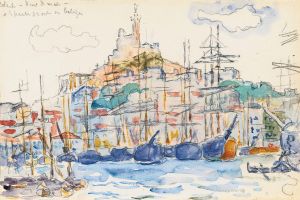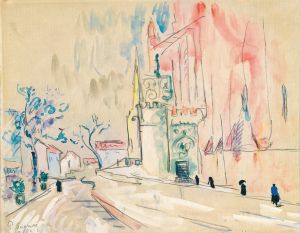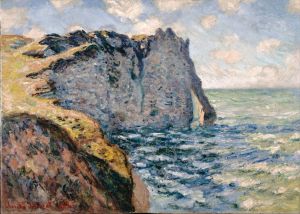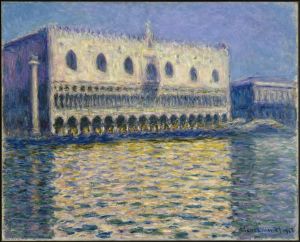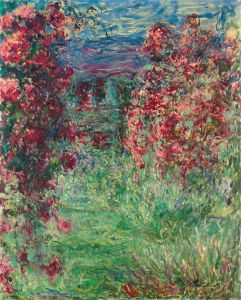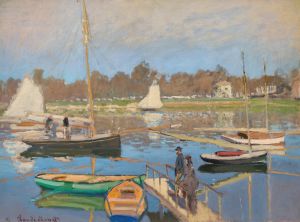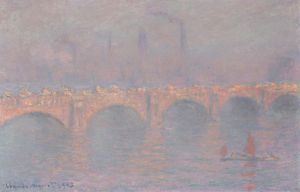
The Windmill on the Onbekende Gracht, Amsterdam
A hand-painted replica of Claude Monet’s masterpiece The Windmill on the Onbekende Gracht, Amsterdam, meticulously crafted by professional artists to capture the true essence of the original. Each piece is created with museum-quality canvas and rare mineral pigments, carefully painted by experienced artists with delicate brushstrokes and rich, layered colors to perfectly recreate the texture of the original artwork. Unlike machine-printed reproductions, this hand-painted version brings the painting to life, infused with the artist’s emotions and skill in every stroke. Whether for personal collection or home decoration, it instantly elevates the artistic atmosphere of any space.
Claude Monet, a leading figure in the Impressionist movement, is renowned for his ability to capture the transient effects of light and atmosphere in his paintings. One of his lesser-known works, "The Windmill on the Onbekende Gracht, Amsterdam," exemplifies his skill in depicting urban landscapes with a distinct impressionistic style. Painted during Monet's travels, this artwork reflects his fascination with the interplay of natural and man-made elements within a cityscape.
Monet visited the Netherlands several times during his career, drawn by the country's unique light and the picturesque quality of its landscapes and architecture. The painting "The Windmill on the Onbekende Gracht, Amsterdam" is believed to have been created during one of these visits, capturing a quintessentially Dutch scene. The Onbekende Gracht, which translates to "Unknown Canal," is one of the many waterways that crisscross Amsterdam, a city famous for its canals and historic windmills.
In this painting, Monet employs his characteristic loose brushwork and vibrant color palette to convey the scene's atmosphere. The windmill, a symbol of Dutch ingenuity and tradition, stands prominently against the backdrop of the canal. Monet's use of light and shadow creates a dynamic composition, drawing the viewer's eye across the canvas. The reflections in the water are rendered with a delicate touch, showcasing Monet's ability to depict the fluidity and movement of water, a recurring theme in his work.
The painting captures a moment in time, with the windmill's sails seemingly caught in motion, suggesting a gentle breeze. The surrounding buildings and trees are depicted with a softness that contrasts with the solid structure of the windmill, highlighting Monet's interest in the harmony between nature and architecture. This balance is a hallmark of his work, as he often sought to portray the beauty of everyday scenes through his unique perspective.
Monet's time in Amsterdam was part of a broader exploration of European cities, where he sought to capture the essence of urban life through his art. His travels allowed him to experiment with different environments and lighting conditions, enriching his artistic repertoire. "The Windmill on the Onbekende Gracht, Amsterdam" is a testament to his ability to adapt his impressionistic style to diverse settings, maintaining his focus on light and atmosphere.
While this painting may not be as widely recognized as some of Monet's other works, it remains an important piece within his oeuvre. It reflects his continued exploration of new subjects and his dedication to capturing the fleeting moments of beauty in the world around him. Monet's work in Amsterdam, including this painting, contributes to our understanding of his artistic journey and the development of Impressionism as a movement.
In summary, "The Windmill on the Onbekende Gracht, Amsterdam" by Claude Monet is a fine example of the artist's impressionistic approach to urban landscapes. Through his masterful use of color, light, and composition, Monet captures the essence of a Dutch scene, blending natural and architectural elements in a harmonious depiction. This painting not only highlights Monet's technical skill but also his enduring fascination with the interplay of light and environment, a theme that defines much of his work.





